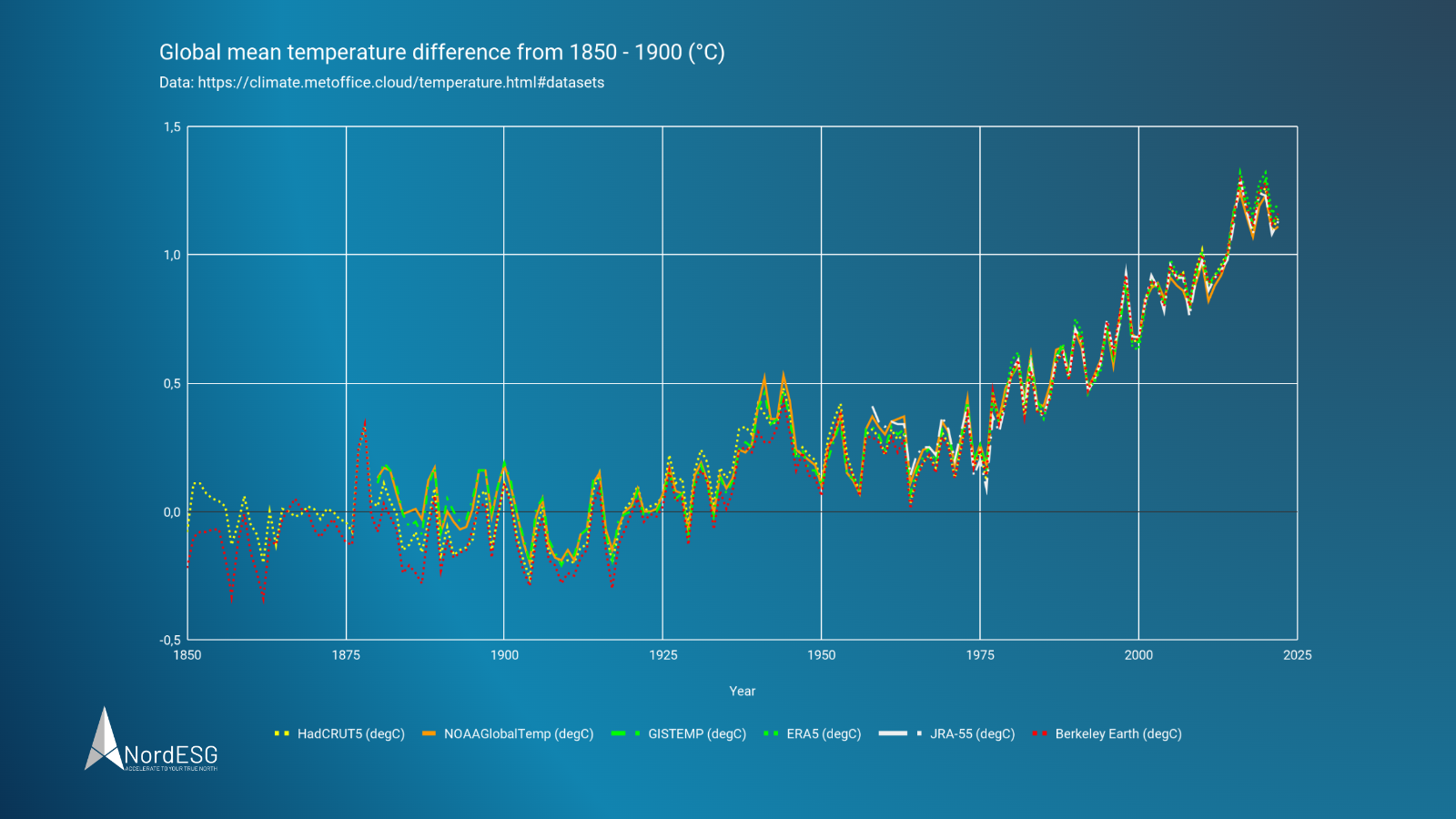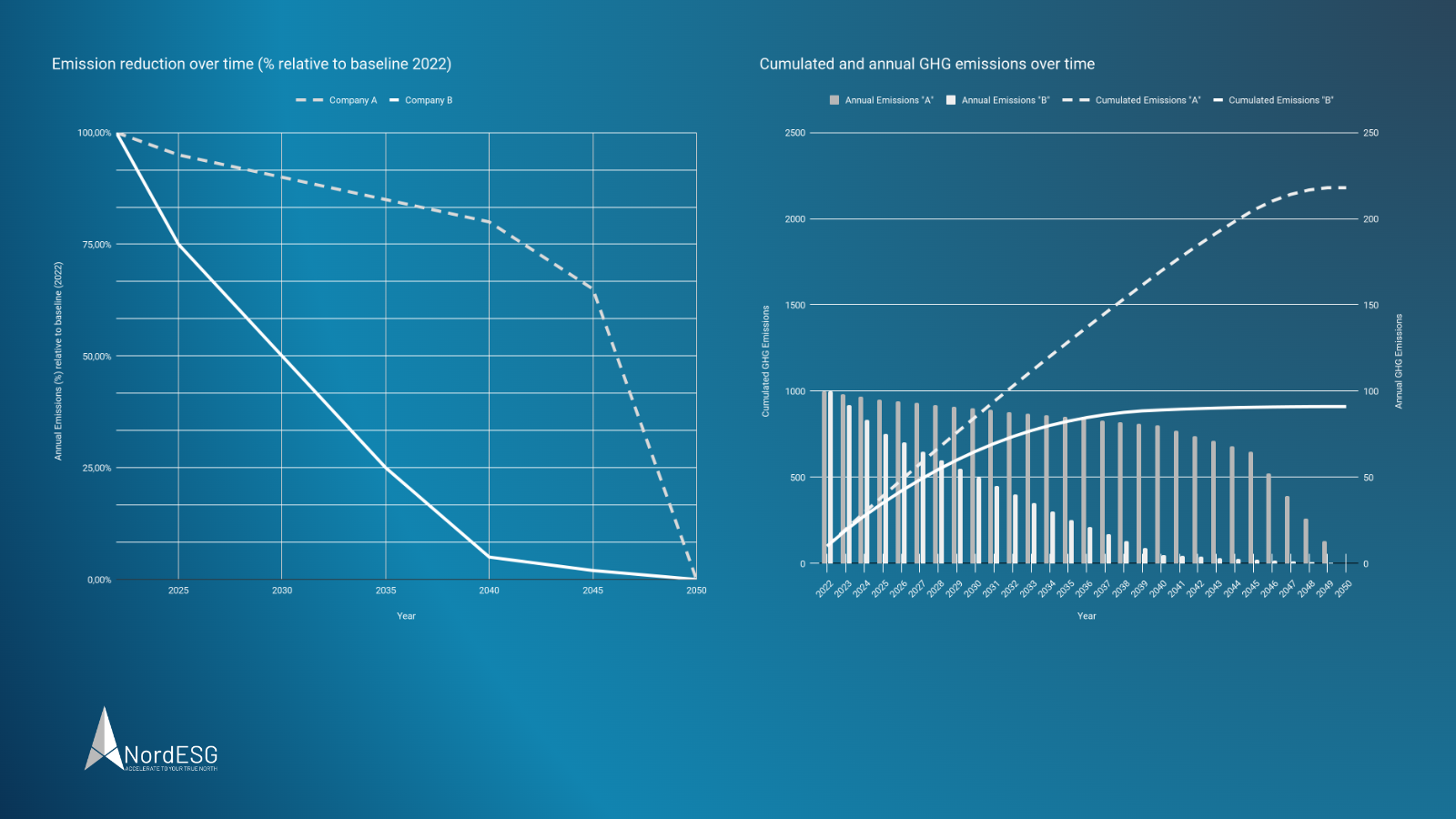Climate risk, net-zero strategies, decarbonization of value chains – stakeholder expectations and regulatory trends – Part 1
In 2022 we experienced unprecedented heat waves, floods and snowstorms. More than that, 2022 was, again, one of the warmest years on record. Climate scientists predict that 2023 will become one of the warmest years on record. GHG emissions increase further and drive climate change. Corporations are expected to take up the fight against climate change. Besides risk management, this notion is driven by growing stakeholder awareness, leading to net-zero pledges and the decarbonization of value chains. In this blog post, we first provide an overview of the findings and predictions of climate science. After that, we discuss how corporations can act: What strategies and frameworks can corporations use to arrive at net zero, and how can they decarbonize their value chains? Finally, what are the regulatory trends to be aware of?
Rising temperatures
While researching climate change, we quickly realised that we could only cover the core information in this blog post. We decided to provide a distilled version here and added links with sources and additional information at the end of this post.

The chart above shows the global mean temperature difference from 1850-1900 (unit of °C). The graph combines six internationally recognized datasets from institutions like Berkeley and NOAA retrieved from the Met Office. The trend is clear: The average temperatures are increasing, with 2022’s temperatures around 1.15°C higher compared to the pre-industrialized period. The past eight years (2015 – 2022) have been the warmest ever recorded, and the predictions are that this trend will continue. According to the Met Office, 2023 may bring average global temperatures between 1.08°C and 1.32°C above the average temperatures observed in pre-industrial times.
The return of El Niño
The El Niño phenomenon will likely contribute to increased global temperatures in 2023, with forecasts suggesting El Niño will return later in 2023 and exacerbate extreme weather conditions globally. Predictions go so far as there is a 50% chance of crossing 1.5°C.
Drivers for climate change and global warming
Greenhouse gas, or GHG, trap heat in the atmosphere. With rising levels of GHG, the effect increases even further. GHG emissions stem from human activity and also from natural processes. But GHG is not limited to CO2. Other greenhouse gases like CH4 or SF6 are way more potent than CO2 when it comes to global warming.

GHG emissions have been monitored over long periods, and it is clear to see that the share of carbon dioxide increased over time. Scientists concluded that the concentration of carbon dioxide increased by 2.1 ppm in 2022 compared to 2021, and the concentration of CH4 rose about 12 ppb during the same period, resulting in an annual average CO2 concentration of 417 ppm and 1894 ppb for CH4 in 2022.
According to scientists, these are the highest levels recorded for 2 million years for carbon dioxide and 800’000 years for methane. Besides human-induced GHG emissions, the ongoing climate change and resulting droughts lead to wildfires across Europe and other regions. For example, it is estimated that in 2022, wildfires in France, Spain, Germany, and Slovenia led to the highest emissions from that category in at least 20 years.
An alarming trend and a growing risk
Considering this, the alignment with the Paris agreement of limiting global warming to 1.5°C is in danger. The Paris agreement on global warming aims to avoid climate change’s worst, but not all, impacts. So how fast can humanity as a whole adapt to climate change? Unfortunately, from what we saw in 2022, the pace of climate change seems too high: Several dramatic severe weather events claimed lives, destroyed livelihoods and infrastructure, affected the health and harmed food, energy, and water security.
The damage
2022 came with extreme heatwaves, drought and devastating floodings: Heatwaves hit Pakistan and northern India in spring leading to new temperature records. China’s central and eastern parts experienced a heatwave and a subsequent drought in summer. Parts of Europe, Africa, and North and South America also experienced heatwaves. For example, in Germany and the UK, rivers ran dry, and wildfires occurred due to the hottest summer on record for Europe. In addition, the hot summer impacted agriculture, river transport and energy generation. The drought in Africa developed into a humanitarian catastrophe. August brought extreme rainfall to Pakistan leading to widespread flooding causing loss of life and widespread destruction. Flooding also occurred in Australia following below-average temperatures and unusually wet conditions. At the end of 2022, North America experienced severe storms, heavy snowfall and low temperatures. So the results of global warming have affected millions of people’s lives globally and cost billions of dollars.
With river transport no longer feasible, the risks associated with climate change became a real problem and couldn’t be understood as a mere academic problem anymore.
Action required
Climate change is a challenge for the ecosystem and affects humanity on a global scale. Unfortunately, groups most vulnerable to the effects of climate change are often those least likely to contribute to it. That is one reason why the 1.5°C goal is relevant in this context since, with this alignment, there is at least a 50% chance of mitigating the worst consequences of climate change. To achieve this, greenhouse gas emissions must be significantly reduced to arrive at net zero finally.
Why the way to net zero matters
There are two important milestones: Reducing GHG emissions by 50% by 2030 and reaching net zero by 2050. So it is not enough to pledge for net zero by the year 2050 since the way to net zero matters too. Here is a thought experiment to illustrate that.
Got questions about Net-Zero?
Book a free and nonbinding discovery call to discuss your questions with one of our carbon accounting experts, and learn how we can help you with Scope 3 Emissions.

Two companies, “A” and “B”, pledge to reach net zero by 2050. Company “A” plans to reduce its GHG emissions gradually until 2040, but the most significant reductions will take place in the period between 2040 to 2050. Company “B” follows a different approach by reducing GHG emissions right from the start: 50% by 2030 and 100% by 2050.
Both companies will arrive at net zero by 2050. Still, with very different cumulative emissions over time: The cumulated emissions for company A are more than twice as high as company B’s. This example illustrates how important the way to net zero and the milestones along the way are. This little thought experiment clarified that the pathway to achieving the net zero goal is equally important as the long-stretch goal of arriving at net zero itself. So how can companies define their path to net zero, and what frameworks can be utilised to guide the way? Read more about that in part 2 of this blog post.
Preview on part 2
In part 2 of this blog post (we will link to part 2 here as soon as it is published), we discuss how companies can plan their transition into net zero emissions by setting scientifically based goals using available frameworks like SBTi. Furthermore, we discuss the decarbonization of value chains and regulatory trends in the US, Europe, Australia and Asia.
Sources and further reading
World Meteorological Organization’s provisional State of the Global Climate in 2022 report
World Meteorological Organization: Past eight years confirmed to be the eight warmest on record
NASA: 2022 Fifth Warmest Year on Record, Warming Trend Continues
NASA: GISS Surface Temperature Analysis (v4)
Met Office: 2022 – sixth warmest year on record globally
Met Office: 2023 set to be the tenth consecutive year at 1°C or above
Met Office: Climate Dashboard
Met Office: Datasets
About NordESG
NordESG is an advisory firm helping corporates develop, articulate and execute their ESG and sustainability strategies. Our work includes sustainability performance reporting support under various ESG frameworks, strategy development or conducting materiality assessments. By doing so, we help businesses meet their disclosure compliance requirements like CSRD but also help them proactively communicate their strategy to other stakeholders like investors, customers and local communities in which they operate. Our work is focused mainly on Europe and North America.
Discovery Call
Book a free discovery call below
Get in touch via email
Disclaimer
This communication is marketing material. The views and opinions contained herein are those of the author(s) on this page, and may not necessarily represent the views expressed or reflected in other NordESG communications or strategies.
This material is intended to be for information purposes only. It is not intended to provide and should not be relied on for accounting, legal or tax advice, or investment recommendations. Reliance should not be placed on the views and information in this document when taking individual investment and/or strategic decisions. Information herein is believed to be reliable, but NordESG does not warrant its completeness or accuracy.
Some information quoted was obtained from external sources NordESG consider to be reliable. No responsibility can be accepted for errors of fact obtained from third parties, and data and information contained in this communication may change in the future. The views and opinions expressed in this communication may change.